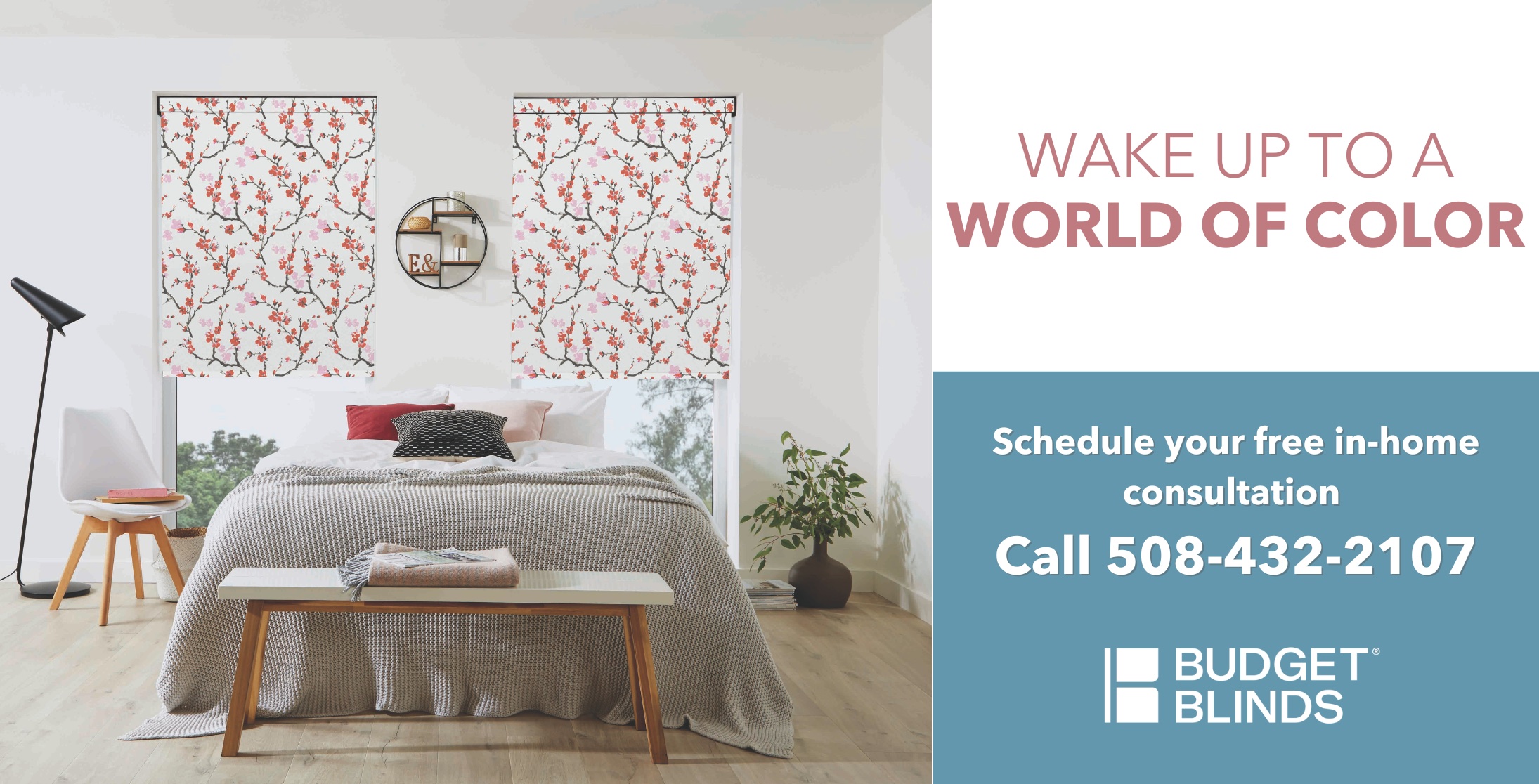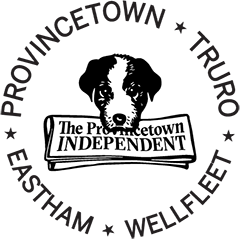In a bright, high-ceilinged studio at the end of a dirt road in Truro, artist Ginny Zanger stands at a bench, working on her latest print. She’s surrounded by fresh-picked botanicals sprinkled with carborundum, half-empty tubes of watercolor paint, colored pencils, and soft rubber brayers.
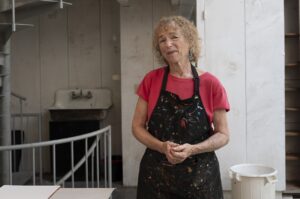
Oaks, blackberries, and Virginia creeper grow right outside the door of the studio — the perfect setting for an artist who starts each work with plants she collects from the landscape. And the studio itself is something special. It once belonged to painter and silkscreen printer Judith Shahn, who died in 2009. Zanger, who lives and works in Truro and Boston, has been making art in Shahn’s studio this summer with permission of the house’s current owner.
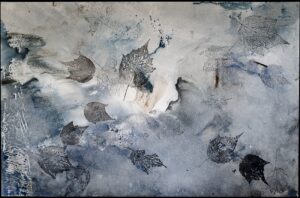
As Zanger peels a piece of Yupo, a synthetic paper made of polypropylene, from a sheet of plexiglass to see what she’s created, she seems pleased. And also surprised. “You never know exactly what you’re going to get,” she says. “It’s a collaboration with the elements — wind, water, earth, and plant life.”
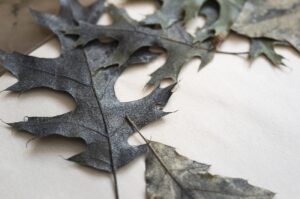
Zanger, who is represented by Wellfleet’s Cove Gallery, calls her work botanical monotype paintings. They’re a combination of techniques she’s developed over many years. Ten years ago, during one “magical week in a dune shack,” won through the Provincetown dune shack lottery, she taught herself to make monotypes without a press, using only her hands, the brayer, or flat objects. Last summer, Zanger, a Copley Master, participated in the Copley Society of Art’s one-month residency at the Fine Arts Work Center in Provincetown. During that time, she combined botanical printing techniques with her watercolor-on-Yupo process.
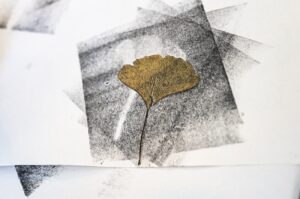
In the studio, Zanger starts by picking leaves with pronounced veins and pressing them between the pages of an antiquarian book, the absorbency of its aged paper ideal for the task. She then squeezes a dab of ink onto a sheet of plexiglass and thins it with a brayer until it’s no longer tacky. With the same brayer, she applies the ink to the leaf, vein side up, and places the inked botanical, vein side down, onto a sheet of Yupo. Finally, covering the plant with an overlay of newsprint, she presses the leaf onto the Yupo, leaving its impression on the glossy paper.
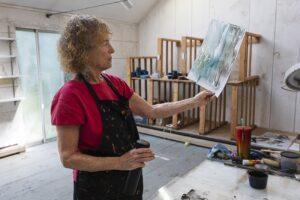
Zanger continues pressing leaves onto the paper as she adjusts the composition in real time. Yupo, with its smooth finish, allows Zanger to manipulate — scratch, erase, and smudge — the impressions before or after monoprinting over them with watercolors.
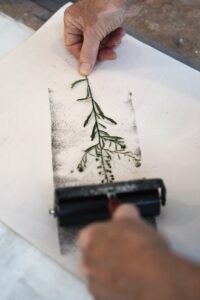
The monoprinting comes next. Zanger squeezes some watercolor paints onto the plexiglass and, with a wet brush, breaks up the pigments, spreading them across the surface until they approximate the size of the paper they’ll be applied to. She then places the Yupo with the leaf impressions over the plexiglass, smooths it with the brayer, peels it off, and lays it on a flat surface to dry.
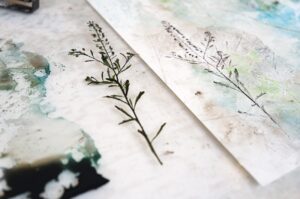
After the pressing, Zanger continues to work on each image. Using watercolor crayons or pencils, paint brushes, tweezers, and toothbrushes, she adds or subtracts color and texture. “It’s done when there’s nothing left that bothers me,” she says.
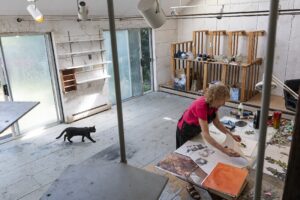
The finished art is interpretive and mysterious but with a distinct feeling for nature and its calming qualities. A viewer might see winding paths, ponds, and even wildlife — many of which Zanger herself hadn’t noticed — in the abstract qualities of the painting.
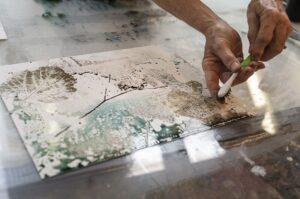
“My work is an ode to nature while hinting at its fragile future,” Zanger says. “Incorporating actual botanical material strengthens the connection between the art and the natural world. I have been a political activist for more than 50 years, and I hope that in the face of climate chaos, these botanical monoprint paintings may move people to work to protect the beauty of the natural world.”
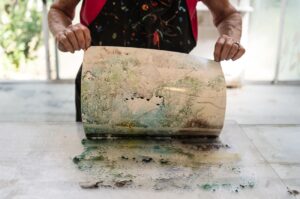
Natural Art
The event: Ginny Zanger artist talk and demonstration of monoprint techniques\
The time: Thursday, July 24, 5:30 p.m.
The place: Cove Gallery, 15 Commercial St., Wellfleet
The cost: Free
